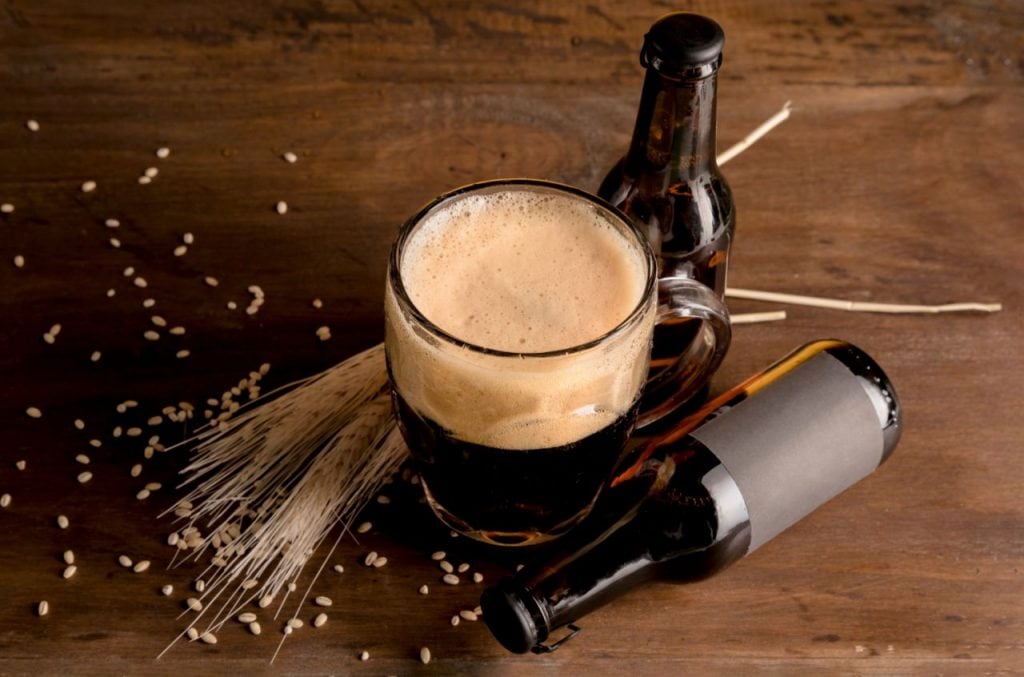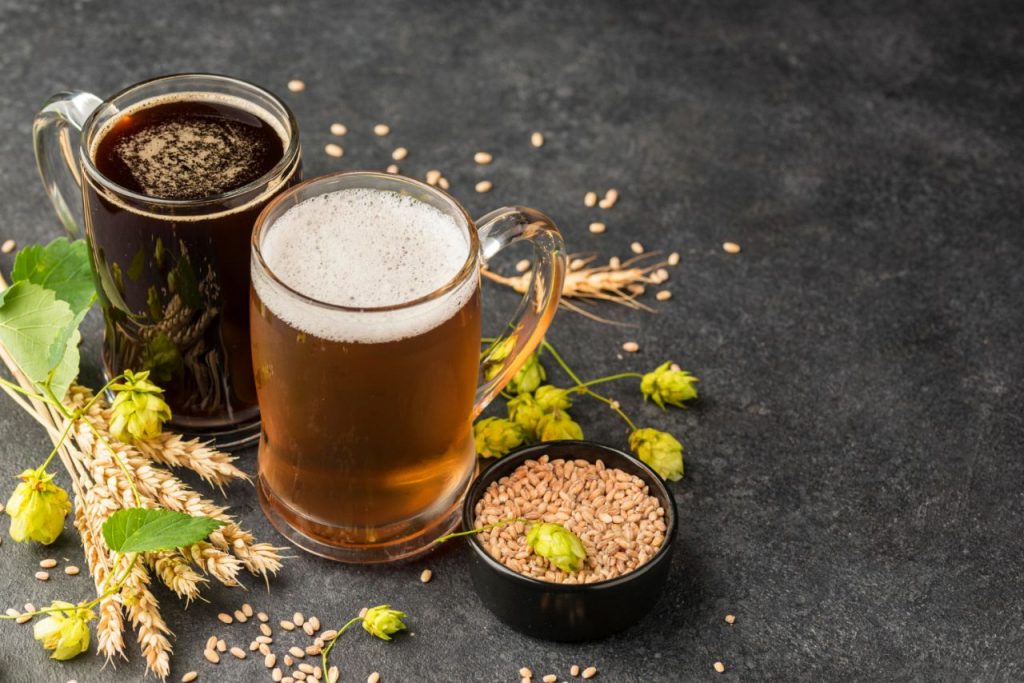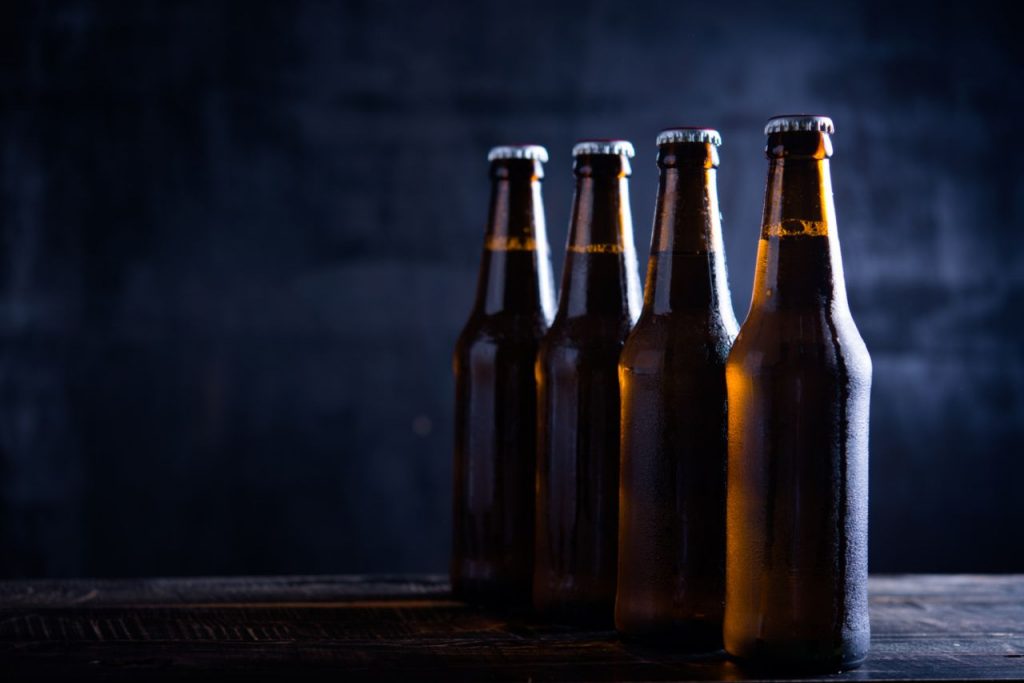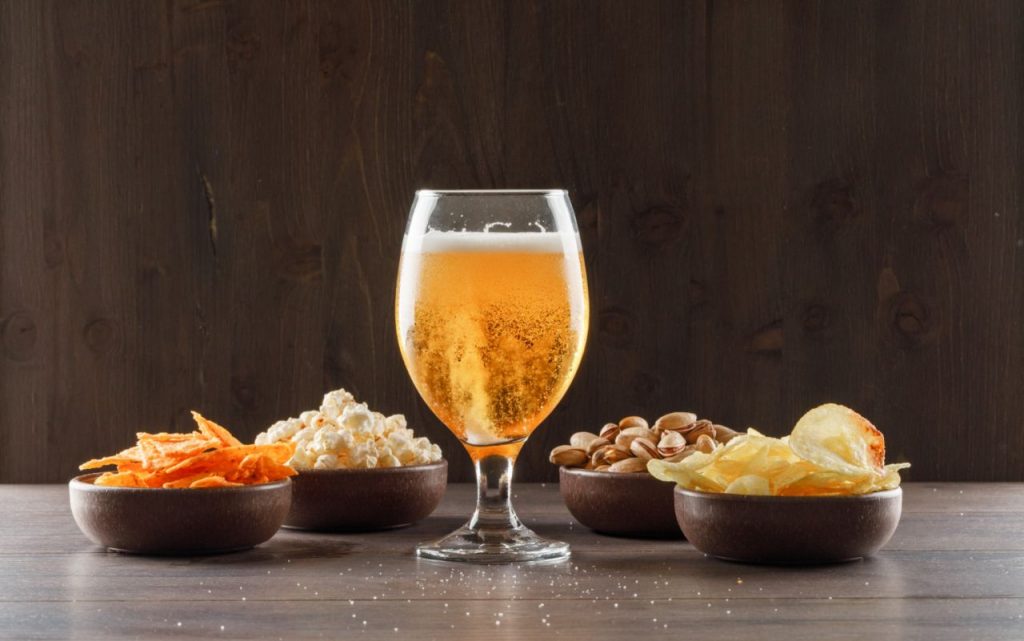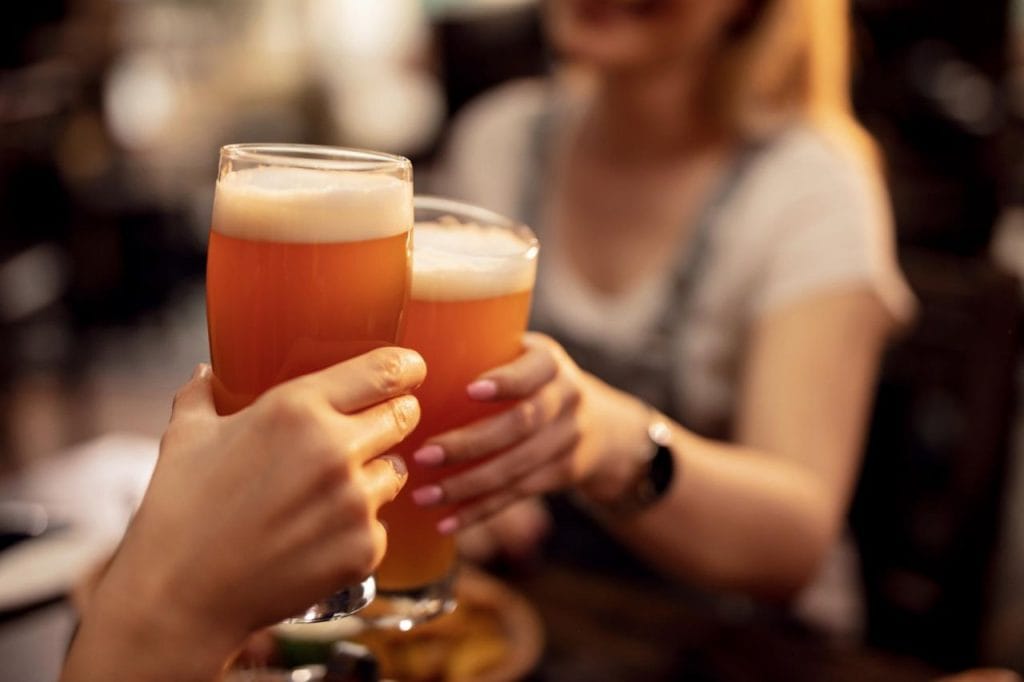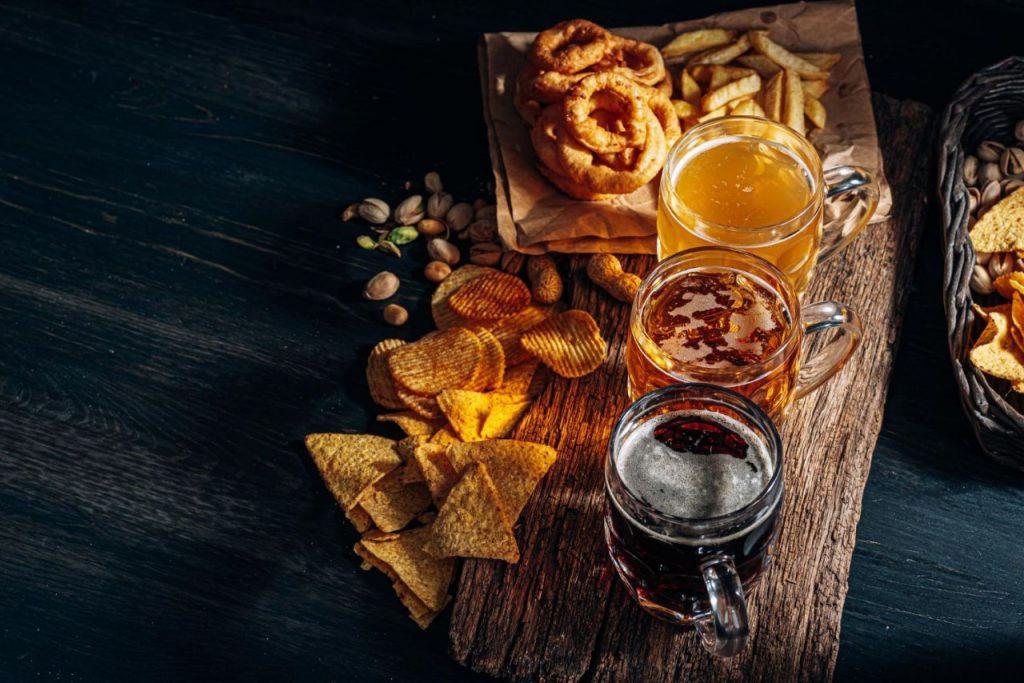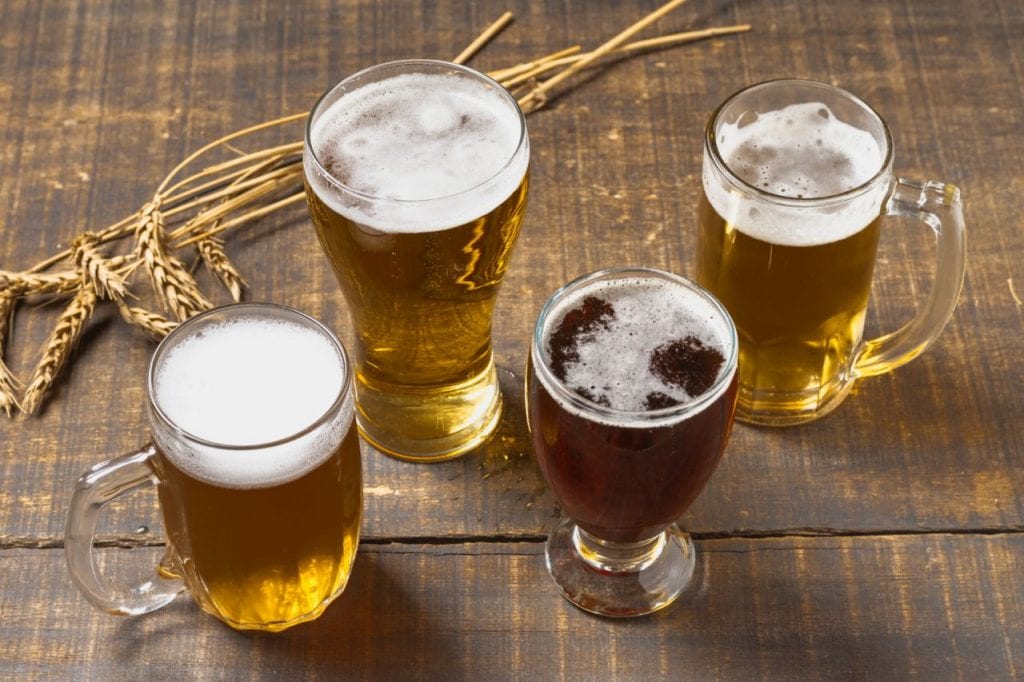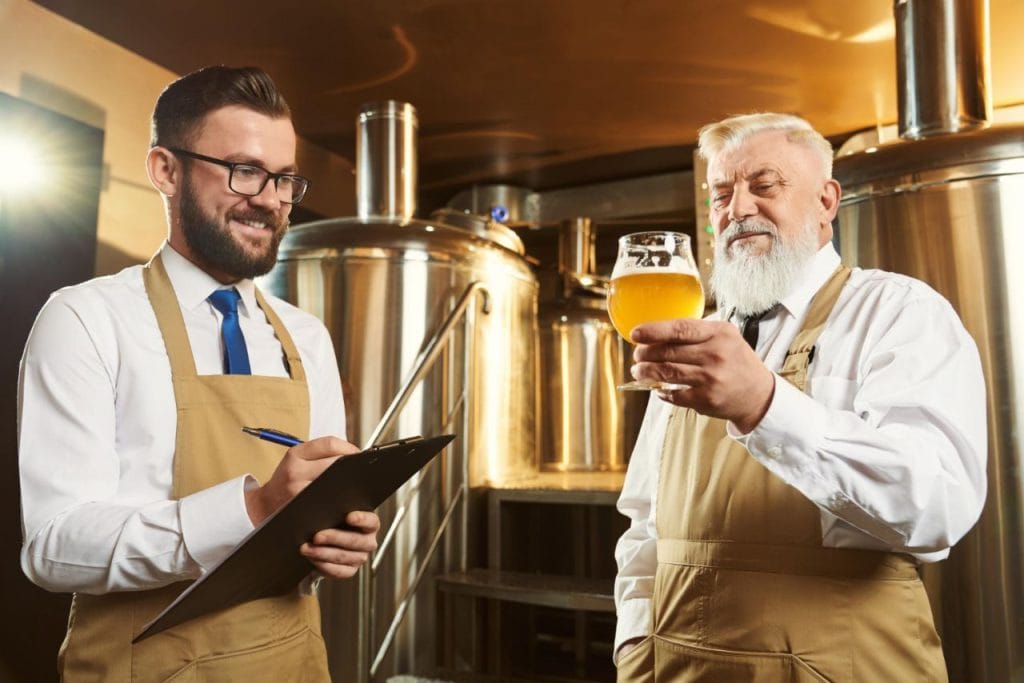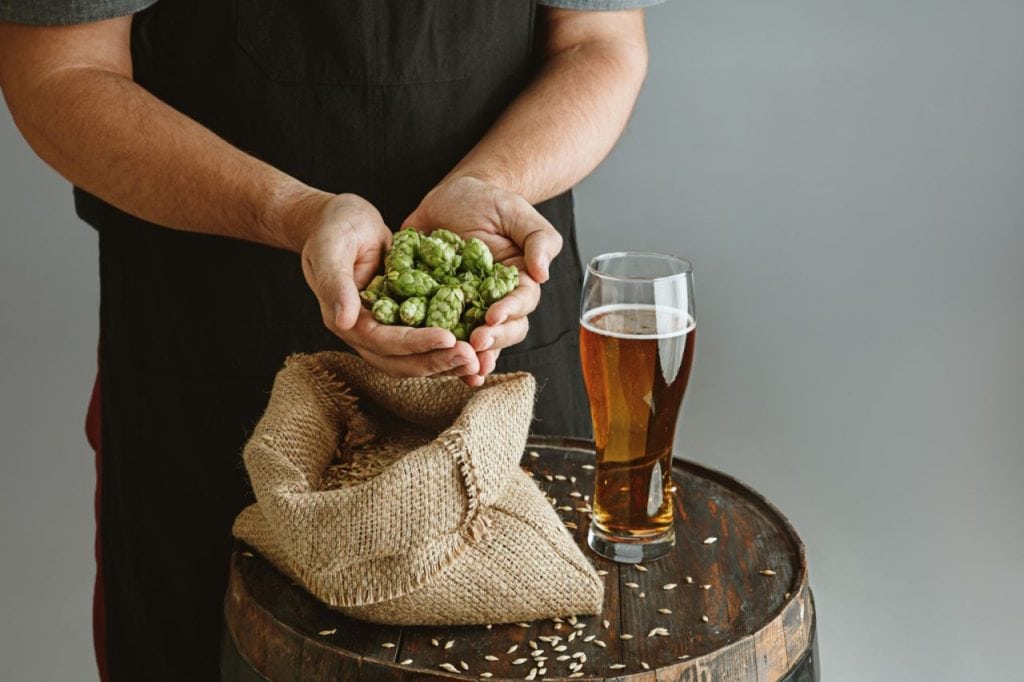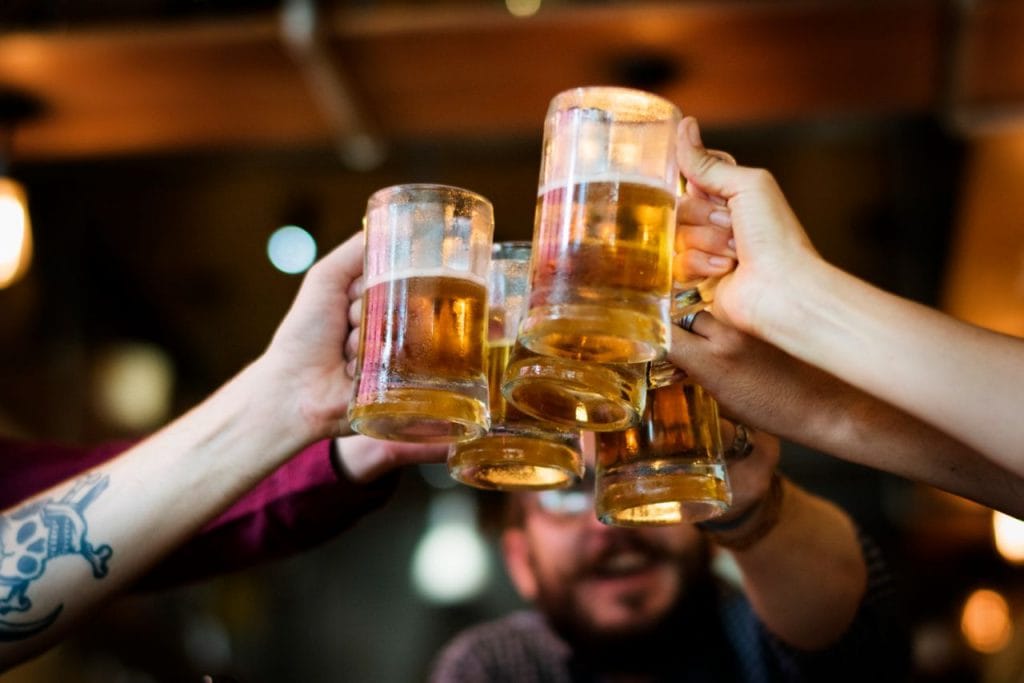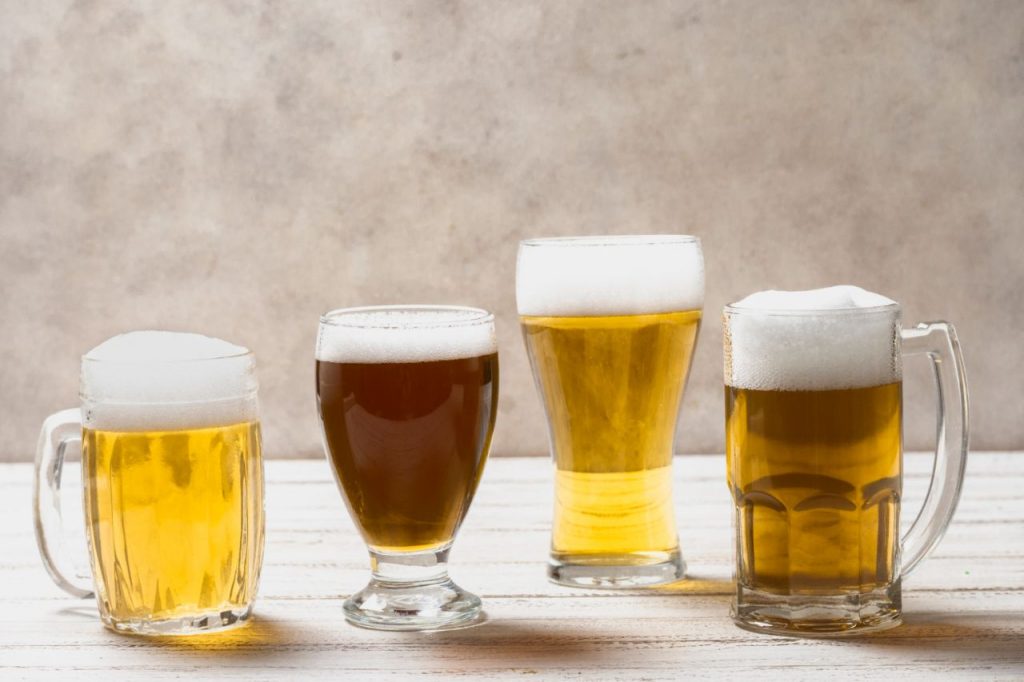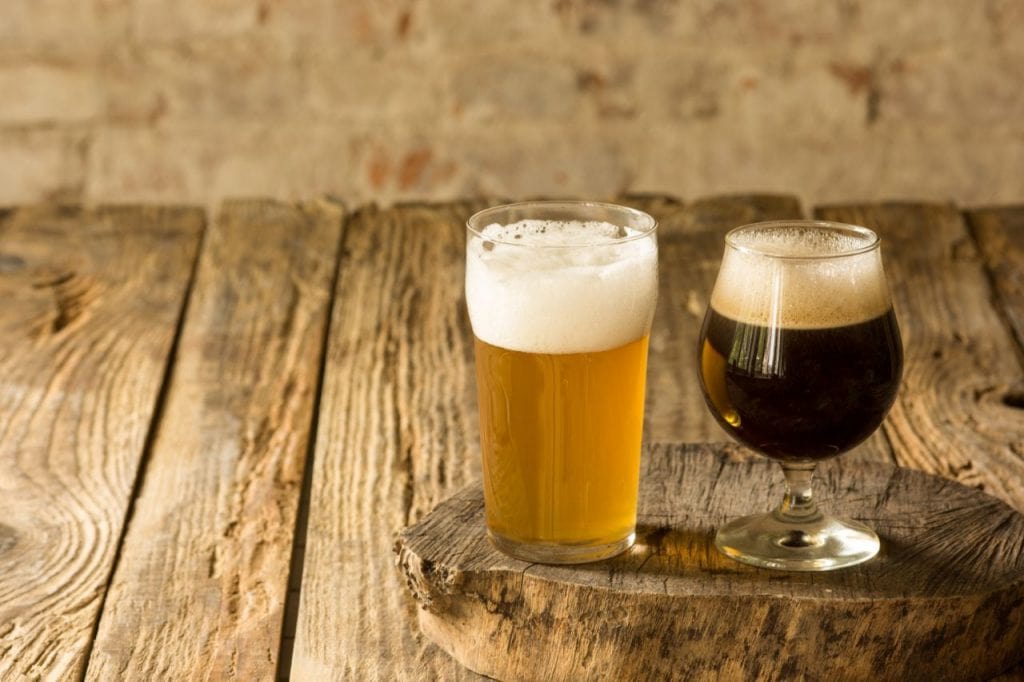There are many types of alcohol, but the two most popular ones are beer and wine. So what is the difference between these two beverages? Beer is a type of ale or lager made from malted barley, water, hops, and yeast. On the other hand, wine is made from grape juice (or other fruit) that has been fermented. So which one should you choose? It depends on what you like! If you're looking for a light drink with a slightly fruity flavour, go for wine. On the other hand, opt for beer if you're in the mood for something richer and more flavorful.
Beer and wine are both alcoholic drinks made from fermented fruit or grain, but there are several key differences between the two. For one, beer is typically made with barley, and white wine is made with grapes. Hops, which provide a bitter taste, are used in beer production, but white wine does not contain them. In fermentation, the beer undergoes a single process, while wine undergoes a double fermentation process.
Finally, beer is typically served cold, and white wine is served at room temperature. These distinctions give beer and wine unique flavours and textures, making them ideal for different occasions.
What Is Beer?
Beer, an alcoholic beverage, is made by combining a number of different ingredients, the most important of which are malt, hops, water, and yeast. Before the brewing process can get underway, the malt needs to have its kernels ground.
This step is essential due to the fact that it plays a role in the transformation of starches into sugars. After the malt has been milled, it is put into a mash tun along with hot water, and it is left to steep for the period that has been established in advance.
During this process, the starches are changed into sugars that can be fermented, which will ultimately result in the production of alcohol. Next, the liquid is strained and transferred to a boil kettle, where hops are added for flavour. After boiling for some time, the liquid is cooled and transferred to a fermentation tank, where yeast is added.
The yeast consumes the sugars and produces alcohol and carbon dioxide. The beer is then allowed to age in order for the flavours to develop and settle. Finally, it is bottled or kegged and ready to be enjoyed!
Type Of Beers
There are four main types of beer, each of which has a unique flavour profile, mouthfeel, and level of alcohol concentration. The following are some of them:
Stouts And Porters
Stouts and porters are two of the most popular beer styles, but they can confuse many people. Both beers are typically dark in colour, but stouts are usually darker than porters. Stouts also tend to be fuller-bodied and have a more intense flavour than porters. Both beers can have a variety of flavours, depending on the ingredients that are used. Common flavours in stouts and porters include chocolate, coffee, and caramel. Many people enjoy these beers because of their complex flavour profiles.
When choosing between a stout and a porter, it is important to consider your personal preferences. If you like lighter beers with fewer flavours, then a porter may be better. If you prefer bolder beers with more intense flavours, a stout is likely your best option. Ultimately, the best way to decide which beer is right for you is to experiment with both styles and see what you like best.
Lagers

Brewing process. Lagers are typically brewed at lower temperatures than ales and use a different type of yeast. As a result, lagers tend to be cleaner and crisper-tasting than ales. They also generally have slightly higher alcohol content. While ales can be brewed using any grain, lagers are usually made with barley.
This is a reference to the fact that lagers are normally aged for a longer period than ales, which results in lagers having a more refined flavour. On the other hand, craft breweries have begun producing their own takes on lagers, which frequently have one-of-a-kind flavour profiles and ingredient combinations.
Ales
Ales are a type of beer brewed using a warm fermentation process. This process typically takes place between 60 and 75 degrees Fahrenheit, which allows for the growth of top-fermenting yeasts. As a result, ales are typically fuller-bodied and sweeter than lagers due to the higher alcohol and sugar content.
They are also often darker in colour due to darker malts. Ales can be further divided into subcategories, such as pale ales, stouts, and porters. When choosing an ale, it is important to consider both the style and the flavour intensity. For example, a pale ale may be less bitter than a stout, but it will also have a weaker flavour overall. Ultimately, the best way to find the good ale is to experiment with different styles and see what you enjoy most.
Malts
Malts are a key ingredient in beer, providing the sugars yeast needs to produce alcohol. There are two main types of malt: barley malt and wheat malt. Barley malt is made from malted barley, which has been soaked in water, allowed to germinate, and then dried. This process helps to convert the starches in the grain into fermentable sugars.
Wheat malt is made from malted wheat, which undergoes a similar process. As a result, the flavour and personality of the beer will be influenced by the type of malt used. For example, beers made with wheat malt tend to be lighter in colour and have a slightly sweeter flavour. On the other hand, beers made with barley malt tend to be darker in colour and have a more complex flavour.
What Is Wine?
The majority of wine labels take their names from the regions in which the wine was produced. The following types of wine are among the most widely recognised in the world:
Chardonnay
Regarding white wine, Chardonnay is one of the most popular choices. This versatile wine can be enjoyed independently or paired with various foods. And, with so many different styles of Chardonnay to choose from, there's sure to be a wine that appeals to everyone's taste.
So, what makes Chardonnay such a popular choice? One reason is that it is a very food-friendly wine. Chardonnay pairs well with a wide range of dishes, from poultry and seafood to creamy pasta sauces and rich cheeses. Chardonnay wines can vary greatly in taste, from light and refreshing to bold and full-bodied. This means that there's a Chardonnay out there to suit every palate.
Sauvignon Blanc
Sauvignon Blanc is a white wine known for its crisp, clean flavour. It is made from the Sauvignon Blanc grape, which is native to the Bordeaux region of France. The grapes are usually harvested in September, and the wine is typically bottled in the spring. Sauvignon Blancs are typically light-bodied wines with high acidity levels.
They are often likened to green apples or gooseberries and have a mineral quality reminiscent of flint or steel. Sauvignon Blancs are typically unoaked, meaning they do not spend time ageing in barrels. This allows the wine to retain its fresh, fruity flavours.
Sauvignon Blancs are best enjoyed when young and fresh, although some wines will improve with age. When paired with food, Sauvignon Blancs are versatile wines that can be enjoyed with various dishes. For example, they pair well with seafood, chicken, and salads.
Riesling
Riesling is a versatile white wine that pairs well with various foods. It is produced in dry and sweet styles, making it a good choice for casual and formal occasions. Riesling wines are typically light-bodied, with refreshing acidity and subtle floral aromas. The flavours can range from green apples and citrus fruits to honey and stone fruits.
Due to its versatility, Riesling is an ideal wine for exploring different food and wine pairings. When choosing a Riesling, look for one that has good acidity and moderate alcohol levels. Choose a wine from a cool climate region such as Germany or Austria for the best flavour profile. Serve Riesling chilled, and experiment with different foods to find your perfect pairing.
Pinot Grigio
Pinot grigio is a type of white wine that originates from the Burgundy region of France. It is made from the Pinot Gris grape, derived from the French word for "grey." The Grey Pinot grape is a mutation of the more well-known Pinot Noir grape and produces a light-bodied and refreshing wine.
Pinot Grigio wines are typically dry, with subtle flavours of melon and citrus. They are best served chilled, making them a perfect choice for summertime sipping. When shopping for Pinot Grigio, look for "Delle Venezie" bottles on the label. This indicates that the wine is from the Veneto region of Italy, where some of the best examples of this variety are produced.
Pinot Noir
Pinot noir is a red wine grape grown in cool climates, such as the Burgundy region of France. The grape produces wines with various flavours, from light and fruity to rich and earthy. Pinot noir wines are often described as having cherry, raspberry, and spice flavours.
The wine is also known for its high acidity and soft tannins. Because of these qualities, pinot noir is often considered a versatile food wine that pairs well with a variety of dishes. In addition, pinot noir is one of the key components of Champagne. The grape's delicate flavour helps to balance the sweetness of the other wines in the blend.
Zinfandel
Zinfandel is a variety of red wines typically made in a dry style. It originates from Croatia and is also grown in other countries such as Italy, Slovenia, and the United States. Zinfandel wines are usually medium-bodied with high alcohol levels and moderate tannins.
They often have fruity aromas and flavours of blackberry, raspberry, and spice. Zinfandel wines can be enjoyed on their own or paired with food. Common food choices include grilled meats, pasta dishes, and cheeses. When selecting a Zinfandel wine, look for one produced in a cooler climate, resulting in a more balanced wine. New World Zinfandels are typically fruitier than Old World wines. Serve Zinfandel wines at room temperature or slightly chilled.
Cabernet Sauvignon
The red wine known as Cabernet Sauvignon started in the Bordeaux region of France, which also happens to be the region's name. This wine is made from grapes from the Cabernet Sauvignon vine, and a hybrid was created when the Cabernet Franc grape and the Sauvignon Blanc grape were crossed. The wine is dark red, and the taste is robust and full-bodied, with notes of blackcurrant, cedar, and tobacco. The colour of the wine is dark crimson.
Cabernet Sauvignon pairs well with red meat and bold cheese, making it an ideal choice for a hearty meal. It is also one of the most popular wines for ageing, as it can improve in flavour and complexity over time. Cabernet Sauvignon is a great option if you're looking for delicious and versatile red wine.
Syrah
Syrah wine is a full-bodied red wine produced in the Rhône wine region of France. It is made from the Syrah grape, also known as Shiraz. Syrah wine typically has high levels of tannins and alcohol and noticeable notes of black pepper and dark fruit. The wines are often aged in oak barrels, which helps to round out the flavours and give them a smoother finish.
Syrah wines can vary considerably in taste, depending on the terroir where the grapes were grown and the winemaking techniques used. However, all Syrah wines share a common base of bold flavours that make them ideal for pairing with hearty meats and cheeses. So next time you're looking for a robust red wine to enjoy with dinner, try Syrah.
Beer Vs Wine: Serving Size And Nutrition
When choosing beer and wine, there are a few things to consider. For instance, serving size and nutrition can be important factors. When it comes to serving size, one standard pour of beer is equal to 12 ounces, whereas one standard pour of wine is equal to 5 ounces. This means that ounce for ounce and wine have more alcohol than beer. In terms of calories, a 12-ounce serving of beer has about 150 calories, while a 5-ounce serving of wine has about 100 calories.
When it comes to carbohydrates, beer generally has more than wine. A 12-ounce serving of beer has about 10-12 grams of carbs, while a 5-ounce serving of wine has about 3-4 grams of carbs. In terms of fat, both beer and wine are low in fat. So, when it comes to deciding between beer and wine, it depends on your personal preferences.
Beer might be the better choice if you're looking for something light and refreshing. On the other hand, if you're looking for something with more body and flavour, then wine might be the better choice. Ultimately, the best way to decide is to try both and see which you prefer.
Which Is Healthier—Beer Or Wine?
When it refers to drinking alcoholic beverages, many people are concerned about the number of calories and carbohydrates they take in daily as a result of their behaviour. But, on the other hand, what about the potential health benefits that come from other factors? It turns out that beer and wine both have some substantial health benefits; however, the specific nature of those benefits differs depending on what you're looking for in terms of health benefits from alcoholic beverages.
Beer is a good silicon source, which is important for bone health. It also contains antioxidants, which can help to protect against heart disease. And according to some studies, beer may even help reduce cancer risk. As for the downside, beer is high in calories and carbs, so it’s not the best choice if you’re trying to lose weight.
On the other hand, wine is lower in calories and carbs than beer. It also contains resveratrol, an antioxidant linked to several health benefits, including a reduced risk of heart disease and cancer. However, wine does have one downside: it contains sulphites, which can cause allergic reactions in some people.
So, which is healthier—beer or wine? It depends on your goals. Wine may be the better choice if you want to improve your bone health or reduce your heart disease or cancer risk.
Wine-Making Vs. Beer Brewing: Basic Processes
Wine-making and beer brewing are both ancient art forms that have been passed down through generations. Though the two processes share some similarities, there are also some key differences. Wine-making and beer brewing begin with crushing the grapes or grains to release their sugars. The sugar-rich liquid, must or wort, is then heated to kill harmful bacteria.
After cooling, yeast is added to the must or wort, which begins the fermentation process. During fermentation, the yeast consumes the sugar and produces alcohol and carbon dioxide. Finally, the wine or beer is bottled and allowed to age. While wine-making and beer brewing involve similar steps, some key distinctions exist.
For instance, wine is typically fermented for longer than beer, and it is also often stored in oak barrels to add complexity to its flavour. In addition, hops are used in the brewing of beer but not in the production of wine. Though the two processes differ in some ways, they both result in delicious and refreshing beverages that people can enjoy worldwide.
Basic Wine-Making Process
Making wine is a complex process but can be distilled down to a few basic steps. First, the grapes are harvested and crushed to release their juice. The juice is then placed in a fermentation vessel, where yeast is added to begin the fermentation process.
When fermentation is completed, the wine is transferred to a new container, where it is left to mature and eventually becomes more transparent. Finally, the wine is bottled and ready to be enjoyed. Of course, there are many intricate details that go into each of these steps, but this overview provides a basic understanding of the wine-making process. With a little practice, anyone can learn to make their delicious wine.
Basic Beer Brewing Process
The process of brewing beer is surprisingly simple, but it does require some specialized equipment and ingredients. The basic steps are as follows:
- malted barley is soaked in water to release the sugars
- the sugary liquid (called wort) is boiled with hops to add bitterness and flavour
- the wort is cooled, and yeast is added to begin the fermentation process
- After a few weeks, the beer is bottled and allowed to age.
Of course, there are many variations on this basic process, and each brewer has unique recipes and methods. But at its core, brewing beer is a relatively straightforward process that anyone can learn with a little practice.
Advantages Of Beer Over Wine
When choosing an alcoholic beverage, there are many factors to consider. For example, some people prefer the taste of beer while others prefer wine. However, there are also some significant differences between the two drinks that can make one a better choice than the other.
For example, beer generally contains fewer calories than wine, making it a better choice for those watching their weight. In addition, beer is also a good source of vitamins and minerals, including phosphorus and magnesium. Finally, beer can help promote cardiovascular health by lowering levels of bad cholesterol and increasing good cholesterol levels. As you can see, there are many good reasons to choose beer over wine.
Advantages Of Wine Over Beer
While wine and beer have unique flavours, wine has some clear advantages over beer. For one, wine is lower in calories and carbs, making it a healthier choice for those watching their weight. In addition, wine is typically made with natural ingredients, while many beers contain additives and preservatives.
In addition, wine is a good source of disease-fighting antioxidants, which can assist in the body's natural defence against illness and help prevent illness from occurring in the first place. Last but not least, in contrast to beer, wine is typically considered to have a higher level of sophistication; as a result, it is more likely to be offered at formal gatherings than beer is. As a result, wine is an easy choice, whether your objective is to cut down on the number of calories you consume or to make a good impression on your guests. Both of these objectives may be accomplished by drinking wine.
Conclusion
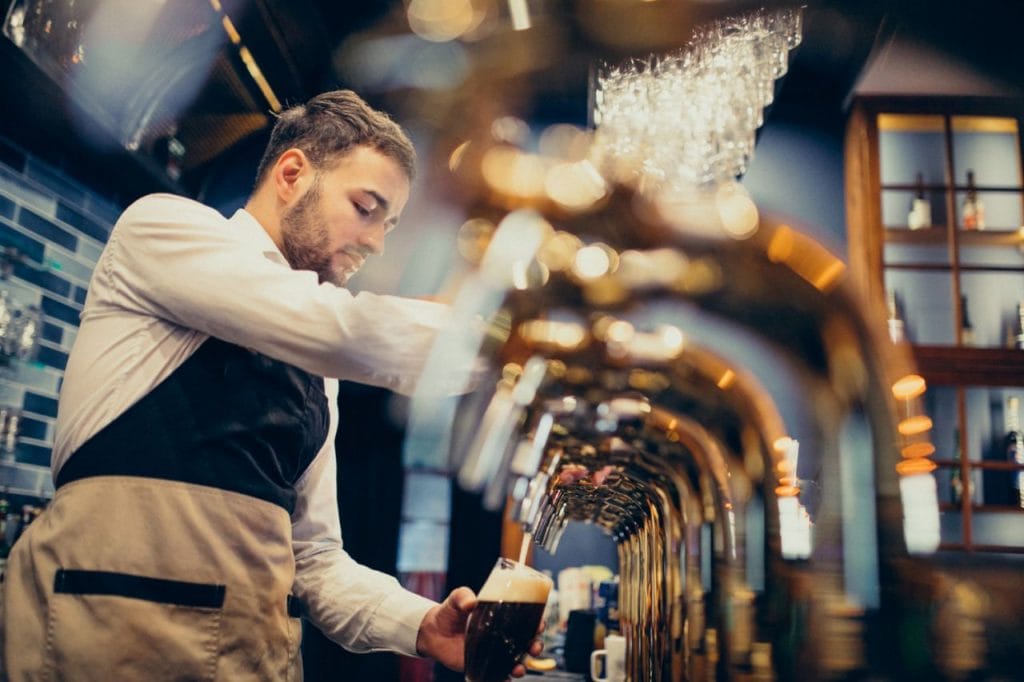
The main difference is that beer contains hops, which give it a bitter flavour; white wine does not. Wine also contains more sugar and alcohol than beer. This is why wine tastes sweeter and has a higher alcohol content than beer. Finally, wine ages better than beer, meaning it can be stored for longer periods without going bad.
Content Summary
- There are many types of alcohol, but the two most popular ones are beer and wine.
- Beer is a type of ale or lager made from malted barley, water, hops, and yeast.
- Beer and wine are both alcoholic drinks made from fermented fruit or grain, but there are several key differences between the two. For one, beer is typically made with barley, and white wine is made with grapes.
- Hops, which provide a bitter taste, are used in beer production, but white wine does not contain them.
- Finally, beer is typically served cold, and white wine is served at room temperature.
- These distinctions give beer and wine unique flavours and textures, making them ideal for different occasions.
- Beer, an alcoholic beverage, is made by combining a number of different ingredients, the most important of which are malt, hops, water, and yeast. During this process, the starches are changed into sugars that can be fermented, which will ultimately result in the production of alcohol.
- Both beers are typically dark in colour, but stouts are usually darker than porters.
- Stouts also tend to be fuller-bodied and have a more intense flavour than porters.
- Many people enjoy these beers because of their complex flavour profiles.
- When choosing between a stout and a porter, you must consider your personal preferences.
- A porter may be better if you like lighter beers with fewer flavours.
- If you prefer bolder beers with more intense flavours, a stout is likely your best option.
- Lagers are typically brewed at lower temperatures than ales and use a different type of yeast.
- While ales can be brewed using any grain, lagers are usually made with barley.
- Ales Ales are a type of beer brewed using a warm fermentation process.
- When choosing an ale, it is important to consider both the style and the flavour intensity.
- For example, a pale ale may be less bitter than a stout, but it will also have a weaker flavour overall.
- Malts are a key ingredient in beer, providing the sugars yeast needs to produce alcohol.
- This process helps to convert the starches in the grain into fermentable sugars.
- As a result, the flavour and personality of the beer will be influenced by the type of malt used. For example, beers made with wheat malt tend to be lighter in colour and have a slightly sweeter flavour.
FAQs About Beer
What Is It Called When A Beer Goes Bad?
When you open a beer that tastes sour, it has gone bad. This is usually caused by a lactobacillus bacteria found in the hops used to brew beer. While this bacterium is harmless to most people, it can cause stomach upset in those sensitive to it.
Therefore, if you notice that your beer has gone bad, it's best to discard it. However, you can also try boiling the beer for 10 minutes, which will kill the bacteria and make the beer safe to drink. Finally, if you're unsure whether your beer has gone bad, it's always best to err on caution and throw it away. After all, there's nothing worse than drinking a sour beer!
When Is The Best Time To Start Drinking Alcohol?
The best time to start drinking alcohol depends on various factors, including personal preferences and health goals. If you're looking to drink for the first time, you may want to wait until you're of the legal drinking age. This will help ensure that you drink responsibly and don't put yourself at risk for alcohol-related problems.
Starting with a dry January or another month-long challenge can help reset your relationship with drinking, which can be helpful if you attempt to reduce the amount of alcohol you consume. And if you're hoping to improve your health, moderate drinking has been shown to offer some benefits, like reducing the risk of heart disease. But, ultimately, the best time to start drinking alcohol is whenever you feel ready and comfortable doing so.
Does Bottled Beer Expire?
You may have noticed that some beers come with a "born-on" date while others do not. This can lead to confusion about how long beer is good for. In general, unrefrigerated bottled beer will remain fresh for around six months. After that, it will start to lose its flavour and aroma.
However, this is only an estimate, and a few factors can affect how long your beer will stay fresh. For example, beer stored in a cool, dark place will last longer than beer stored in a warm, brightly lit location. In addition, beer with a higher alcohol content will generally have a longer shelf life than lower-strength brews. So if you're wondering whether your bottled beer has gone bad, the best thing to do is give it a taste test. If it doesn't taste quite right, it's probably time to toss it out.
Is Draft Beer Stronger Than Bottled Beer?
It's a common misconception that draft beer is stronger than bottled beer. In reality, the two types of beer are typically the same in terms of alcohol content. The main difference between draft and bottled beer is how they're served. Draft beer is typically served at a lower temperature, which can make it seem more refreshing and less alcoholic.
Conversely, bottled beer is usually served at a higher temperature, making it seem more flavorful and more alcoholic. So, when it comes to strength, it's a matter of personal preference. If you're looking for a strong beer, you might want to try a higher-gravity style like a barleywine or imperial stout. But if you're looking for something refreshing and light, a draft beer might be the way to go. Ultimately, it's up to you to decide what you like best.
Where Can I Buy A Home Brew Kit?
You can find home brew kits for sale at many different retailers, both online and in brick-and-mortar stores. Some popular places to buy home brew kits include brewing supply stores, home improvement stores, and online retailers such as Amazon. When shopping for a home brew kit, you must consider your budget and what type of beer you want to brew.
There are kits available for all types of beer, from simple ales to complex lagers. In addition, some kits come with all the necessary equipment and require you to purchase additional items separately. With so many options available, finding a home brew kit that meets your needs and budget is easy.
When you open a beer that tastes sour, it has gone bad. This is usually caused by a lactobacillus bacteria found in the hops used to brew beer. While this bacterium is harmless to most people, it can cause stomach upset in those sensitive to it.
Therefore, if you notice that your beer has gone bad, it's best to discard it. However, you can also try boiling the beer for 10 minutes, which will kill the bacteria and make the beer safe to drink. Finally, if you're unsure whether your beer has gone bad, it's always best to err on caution and throw it away. After all, there's nothing worse than drinking a sour beer!
The best time to start drinking alcohol depends on various factors, including personal preferences and health goals. If you're looking to drink for the first time, you may want to wait until you're of the legal drinking age. This will help ensure that you drink responsibly and don't put yourself at risk for alcohol-related problems.
Starting with a dry January or another month-long challenge can help reset your relationship with drinking, which can be helpful if you attempt to reduce the amount of alcohol you consume. And if you're hoping to improve your health, moderate drinking has been shown to offer some benefits, like reducing the risk of heart disease. But, ultimately, the best time to start drinking alcohol is whenever you feel ready and comfortable doing so.
You may have noticed that some beers come with a "born-on" date while others do not. This can lead to confusion about how long beer is good for. In general, unrefrigerated bottled beer will remain fresh for around six months. After that, it will start to lose its flavour and aroma.
However, this is only an estimate, and a few factors can affect how long your beer will stay fresh. For example, beer stored in a cool, dark place will last longer than beer stored in a warm, brightly lit location. In addition, beer with a higher alcohol content will generally have a longer shelf life than lower-strength brews. So if you're wondering whether your bottled beer has gone bad, the best thing to do is give it a taste test. If it doesn't taste quite right, it's probably time to toss it out.

